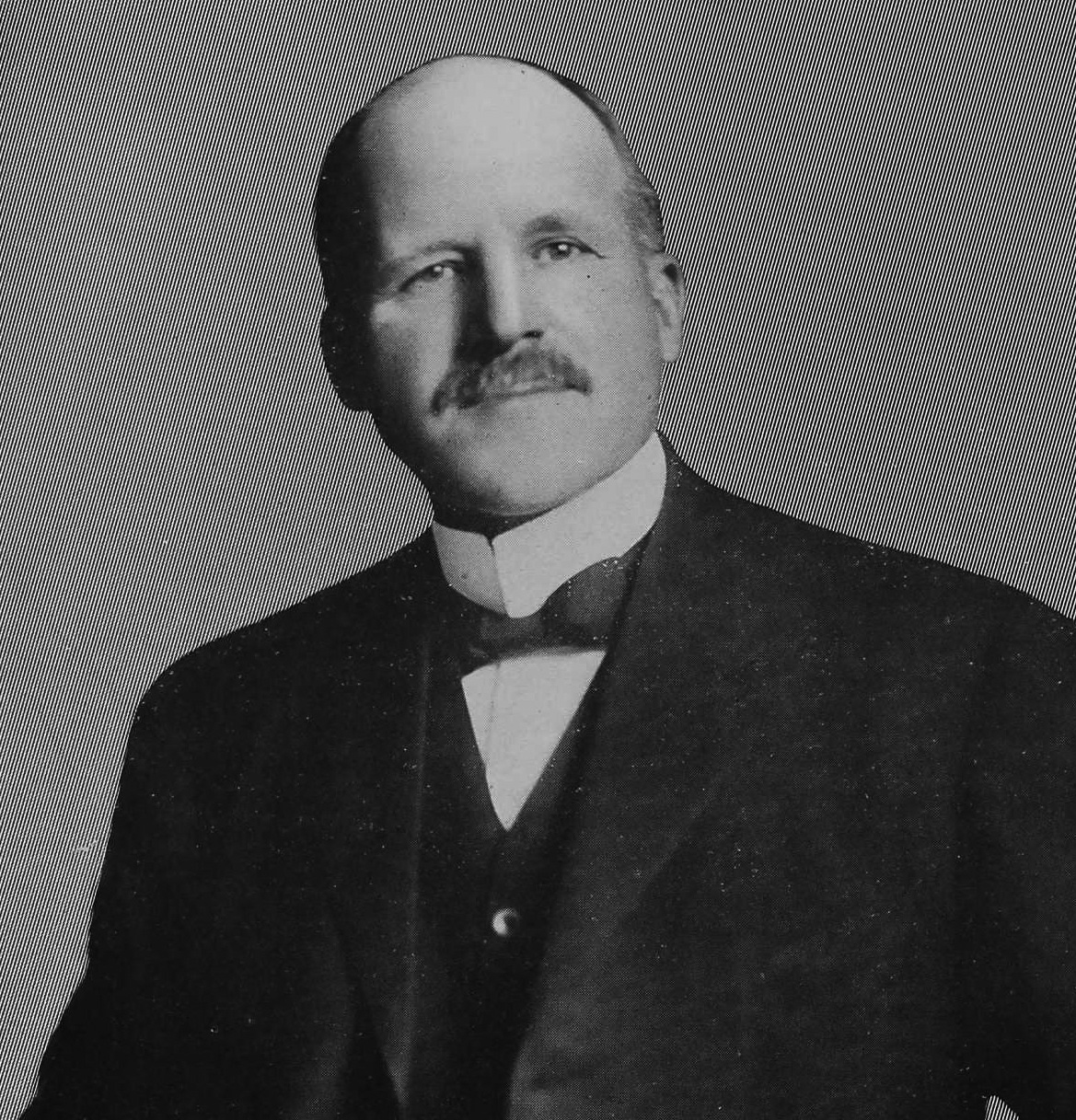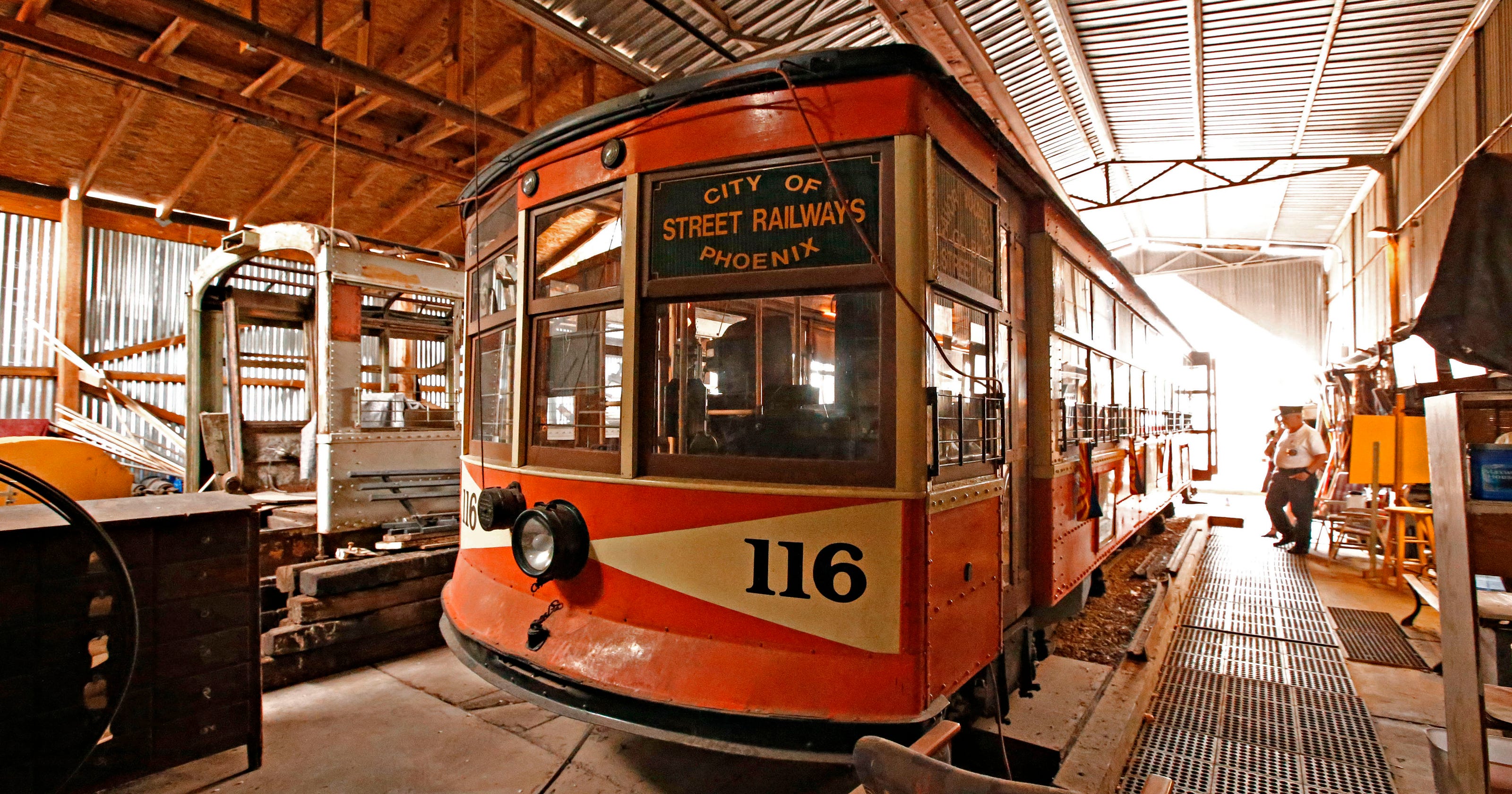-----
 |
| Moses Sherman, 1853-1932 |
Moses Hazeltine Sherman was born on December 3rd, 1853 in Rupert, Vermont. His original goal was to be a teacher, but after obtaining his teaching certificate from the Oswego Normal School in New York, he cut his career short and moved to Prescott, Arizona. To finance his teaching career, he began brokering mines and ranches under the interested eye of Governor John C. Fremont. In no time at all, Sherman was appointed the State Superintendant of Public Instruction with the title of Adjutant-General of the Territory, serving two terms. Sherman would continue to use his "General" title after he stopped teaching completely, instead opting to go into the money business by founding the Valley Bank of Phoenix in 1884.
Spending time in the state capital helped Sherman grow fond of the area, which at the time was barely being established and settled as a non-mining town. The Southern Pacific railroad was the first to reach Phoenix in 1879 to serve commercial needs driven by canal and agriculture. The Arizona Industrial Exposition was held for the first time in 1884 to foster good will and camraderie amongst inhabitants of the then-Arizona Territory, and continues up to today with the Arizona State Fair. Phoenix's capitol site was founded in 1889 when Moses Sherman, with associate M.E. Collins, donated 10 acres of land once the town was determined to be the new center of the territory.
| Horsecars lined up outside the old County Courthouse, 1890s (Rogue Columnist) |
Moses would not stay around to see the growth he planted, as he would move to Los Angeles in 1890 to establish the Los Angeles Consolidated Electric Railway with Eli P. Clark, his brother-in-law. This system would become the Los Angeles Pacific's "Balloon Route" between Venice/Santa Monica and Downtown LA via Hollywood and Venice Blvd. The system helped Los Angeles escaped its economic slump at the time, and would eventually merge with the Southern Pacific in 1906, with the system's owner, E.H. Harriman, earning a cool $6 million from Sherman. The General would retire shortly after in 1911.
 |
| Los Angeles & Pacific car "Hermosa" on an excursion on Sherman's Balloon Route (KCET) |
 |
| The street railway map by 1909, with connection to the ATSF and Arizona Eastern (Mike McDearmon) |
The competitive period also brought a severe strike on the streetcars, with motormen and conductors up in arms against the management's laissez-faire upkeep of the system in 1913. With anti-union citizens boycotting the strike and the creation of the Salt River Electric Railway cutting into their profits, the PSR was in dire straits. Despite it all, the PSR continued to expand until it finally reached its maximum growth in the 1920s through several line extensions: 33.6 miles over six lines with powerlines delivering an interesting 550V-DC to its heritage fleet of wooden ex-horsecars and San Franciscan-patterened street and interurban cars.
| One of the PSR's early "California Car" type streetcars, 1920s (Rogue Columnist) |
By 1925, the public had had enough and urged the city council to buy the system as a means of improving it. Upon purchase, the city of Phoenix implemented increased arrival and departure frequencies and better maintenance to the relief of many, and brand new trolley cars just in time for Christmas, 1928. These cars, built by the American Car Company as "Double Birneys", remained the workhorses of the PSR fleet for the system's remaining years, where it was remembered fondly by locals along with the slogan, "Ride a Mile and Smile."
Unlike many street railways, Phoenix's system did not simply die by bus; instead, it died by fire. On October 3, 1947, a massive fire swept through the city that also burned down a carhouse that contained almost the entire fleet of PSR's double Birneys. In February of next year, Phoenix officials declined rebuilding the streetcar service and abandoned service, switching transportation plans to center around bus service and automobile traffic.
The only remaining pieces of the PSR reside in the Phoenix Trolley Museum on 1117 Grand Avenue. Double Birney No. 116 was preserved following closure and restored to as-delivered condition as a static-display inside its small shed. Public transit in Phoenix is now served by the Valley Metro light rail system, which covers one of the planned interurban routes out to Tempe and Mesa, but more on that later...
| Double Birney 517 turns on the corner of Washington and 2nd, 1940 (Rogue Columnist) |
| The final iteration of the Phoenix Street Railway lines at closure. (Rogue Columnist) |
The only remaining pieces of the PSR reside in the Phoenix Trolley Museum on 1117 Grand Avenue. Double Birney No. 116 was preserved following closure and restored to as-delivered condition as a static-display inside its small shed. Public transit in Phoenix is now served by the Valley Metro light rail system, which covers one of the planned interurban routes out to Tempe and Mesa, but more on that later...
 |
| The Phoenix Trolley Museum's old location at Hence Park, with Birney 116 (John Samora, AZ Central) |
-----
So that brings Phoenix's original trolley system to a close! If you want to support the Phoenix Trolley Museum, please visit their website or follow their social media wherever highlighted. And, as always, I sell tee-shirts if you want to see one of my drawings pasted across your torsos, and be sure to follow me and my editor on social medias if you want more content. Next week, we look at the modern Valley Metro and how it's doing. Until then, ride safe!

While looking for something else, I just came across this post about the Phoenix's streetcar history. Thanks so much for pulling it together. Much appreciated. For news visit https://www.phxtrolley.org I hope all is well with you!
ReplyDelete